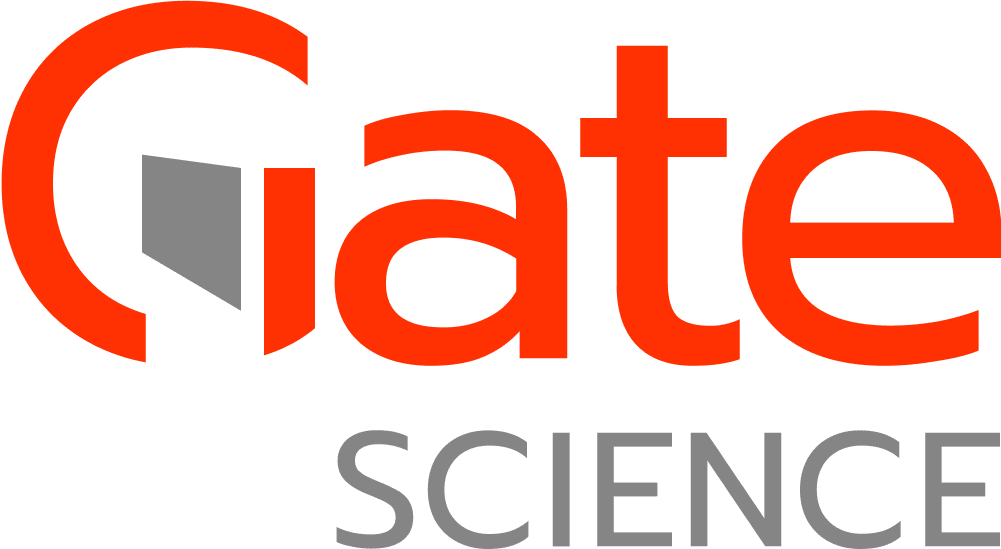RELAY
Gate Science has developed RELAY, the first and only SINGLE SOLUTION to control the entire cycle of pain following surgery. RELAY uniquely combines two established treatment modalities, nerve block, to cover the intense pain immediately following surgery, and neurostimulation, to control the persistent pain in the weeks following discharge. RELAY puts the patient in charge of treatment with the Gate Keeper phone app.
The Science Behind RELAY
RELAY’s unique technology is based upon control of two independent gates control pain transmission along peripheral nerve pathways. These gates operate at the molecular and synaptic levels.
The Molecular Gate
Nerve Block
- The molecular gate is controlled with nerve block, depolarization in the neuronal membrane.
- In normal operation, the molecular gate opens in response to voltage change across the membrane.
- The gate closes in response to pharmacologic blockade by Bupivacaine and other agents at the nerve trunk.
The Synaptic Gate
Neurostimulation
- The synaptic gate is controlled with neurostimulation, manipulation of presynaptic activity in the dorsal horn of the spinal cord.
- In normal operation, the synaptic gate opens in response to the dominance of small fiber input over large fiber input.
- The gate closes in response to neuromodulation, pulsed electrical stimulation of the nerve trunk.


These two gates are complementary, and together they safely cover the spectrum of pain manifest throughout the entire cycle of surgically induced pain. Gate’s wireless RELAY device is the first to combine pharmacologic blockade and neurostimulation in ONE multimodal device, placing control directly in the hands of the recovering patient with the Gate Keeper app.
How RELAY Works
RELAY combines delivery of analgesic solution via an injection port, closing the molecular gate, and neuromodulation via electrodes and an integrated pulse generator, closing the synaptic gate.
Elegant Design, Transformative Technology
The RELAY device is wireless, Bluetooth enabled, waterproof, and the size of a quarter.


Gate’s proprietary anchoring mechanism safely secures RELAY in place, eliminating the problem of migration and dislodgement seen with existing catheter systems.

Fits Seamlessly into Standard Clinical Routines
RELAY is ideally suited for orthopedic procedures, including knee, hip, and shoulder replacement, rotator cuff, ACL, ankle and foot surgeries, and sports injuries.
Prior to surgery, the RELAY device is percutaneously placed next to the target nerve under ultrasound guidance by the anesthesiologist, and a pharmacologic nerve block is administered. Immediately after surgery, neurostimulation, which blocks pain through a separate pathway, is activated in the recovery room.
After discharge, the Gate Keeper app on the patient’s smartphone puts the patient in control of their pain.


“For over a century, the tools in our pain management toolbox for orthopedic surgery have remained archaic ice and an endless variety of different pills with systemic side effects. None of these placed the patient in direct control of their pain with meaningful feedback to the provider. Until now. Welcome to Gate Science.”
Ira Kirschenbaum, MD Chair, Orthopedics at BronxCare Health System
The Gate Keeper App:
Putting the Patient in Control
The Gate Keeper smartphone application lets the patient control the intensity of neurostimulation with the waxing and waning of pain. Instead of reaching for an opioid pill, the patient adjusts pulse intensity up or down via the app.
Gate Keeper provides entrée to the digital management of pain. Gate’s engineers are currently connecting the app to the cloud, facilitating integration with other clinical systems and real time monitoring of the patient’s progress. With wide adoption and inferencing from anonymized patient data, Gate Keeper has the potential to predict and manage pain following surgery.

The Gap in Surgical Pain Control
Nerve blocks using local analgesics are effective in controlling pain in the first 8 – 12 hours after surgery. Continuous infusion pumps used to extend delivery of local analgesic solution to target nerves are limited to three to five days of treatment, frequently dislodge, and may compromise motor function. In recent years, long-acting local analgesic formulations have been developed, but their effect is limited to 72 hours or less.
RELAY’s combined technology is designed to safely control, for the first time, the entire episode of operative pain, including both the severe neuropathic pain of the perioperative period and the prolonged mild to moderate pain in the weeks following surgery – with the potential to prevent the progression to chronic pain.
“RELAY will dramatically enhance patient comfort and satisfaction while reducing unplanned ED and office visits.”
John Keggi, MD Medical Director, Connecticut Joint Replacement Institute St. Francis Hospital

Value
By providing superior pain control over the 28-days following surgery, RELAY has potential to reduce costs associated with readmission for uncontrolled pain and management of opioid related side-effects. Importantly, superior pain control provided by RELAY also has the potential to reduce the substantial costs associated with progression to chronic pain. Furthermore, RELAY may facilitate the migration of complex surgical procedures with high pain burden to the lower-cost outpatient ambulatory setting. In reducing the rate of opioid dependence, RELAY benefits providers, payers, patients, and society.

Reimbursement
While neurostimulation has proven effective in managing post-operative pain in controlled clinical trials, the pricing is prohibitive in the post-operative setting. Further, reimbursement with neurostimulation codes remains problematic. Of note, pricing for RELAY will be an order of magnitude less than commercially available neurostimulation devices, and clinicians and facilities using RELAY will use established reimbursement codes for nerve block and clinical monitoring. New CMS policies may provide additional reimbursement.

